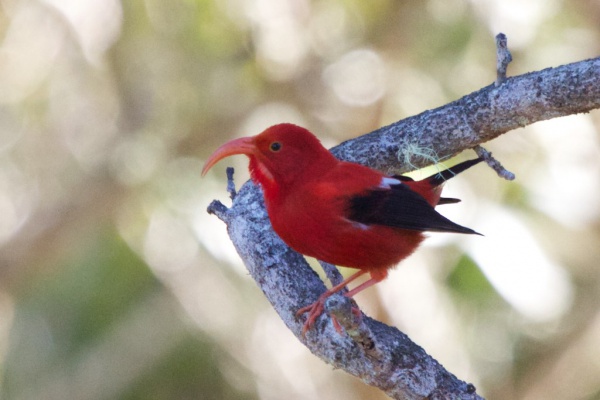Facts About ʻIʻiwi
The ʻiʻiwi, commonly known as the scarlet honeycreeper, is one of Hawaii's most iconic birds. Easily recognizable by its vibrant scarlet feathers, black wings, and distinctive salmon-colored bill, the ʻiʻiwi is the third most common native land bird in the Hawaiian Islands. Its name is derived from the Proto-Nuclear-Polynesian word *kiwi*.
In Hawaiian culture, the ʻiʻiwi holds a special significance. Historically, its feathers were used to adorn feather cloaks and helmets, making them highly prized possessions. The bird also features prominently in Hawaiian folklore and traditions.
The ʻiʻiwi's diet primarily consists of nectar from Hawaiian lobelioids and ʻōhiʻa lehua trees, but it also consumes small arthropods. The breeding season begins in early winter, with females laying eggs in cup-shaped nests.
However, the ʻiʻiwi faces numerous threats. Habitat loss, diseases like fowlpox and avian malaria, and invasive species that impact their food sources and nesting sites pose significant challenges.
Today, most of the ʻiʻiwi population is found on Hawaiʻi Island and East Maui, with smaller groups on Kauaʻi, Molokaʻi, and Oʻahu. Conservation efforts are underway to protect this beautiful bird, such as creating nature reserves, fencing off areas to exclude invasive animals, and addressing threats like Rapid ʻŌhiʻa Death.
Due to declining populations and susceptibility to diseases, the ʻiʻiwi was listed as vulnerable in 2008. In 2017, the United States Department of the Interior officially classified it as a threatened species. These efforts underscore the importance of preserving the ʻiʻiwi and its habitat for future generations.

 Mexico
Mexico